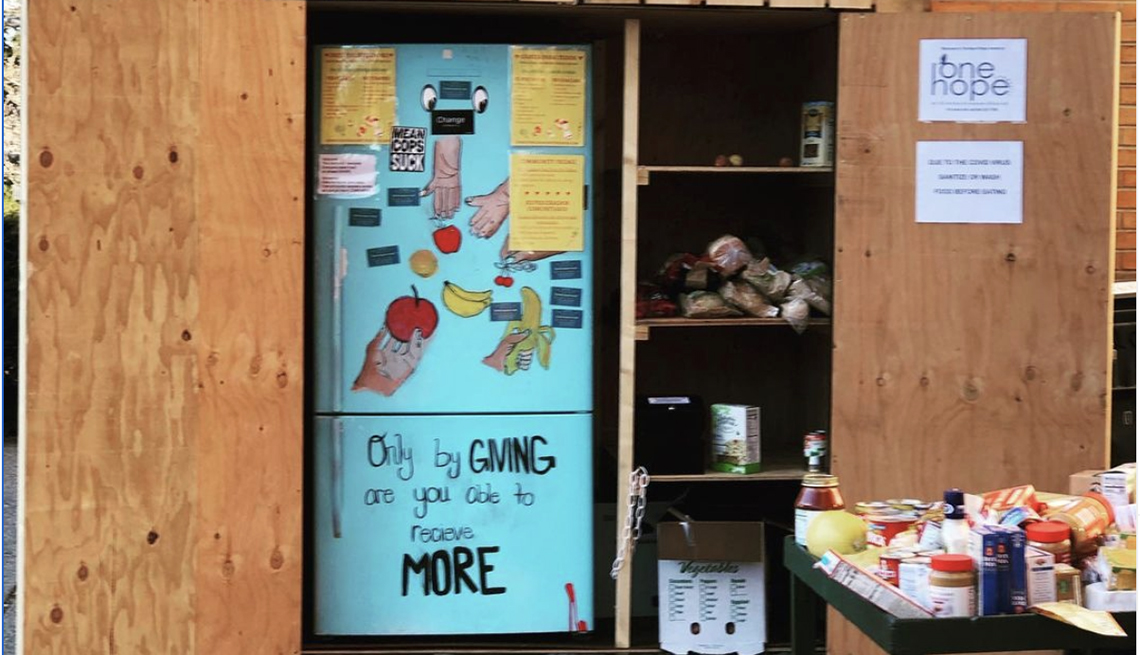
Organizations help feed the hungry with community fridges
- Select a language for the TTS:
- UK English Female
- UK English Male
- US English Female
- US English Male
- Australian Female
- Australian Male
- Language selected: (auto detect) - EN
Play all audios:

"There's plenty of food to feed everyone,” she says, “but it's not in the right places for so many people.” For MacVane and other “hosts,” as the organizers of these
initiatives are often called, the community fridge model strips away hierarchies and even logistical limitations of traditional feeding programs. No more lining up or registering, providing
IDs or feeling like the recipient of a handout. Like The Blue Fridge in Kingston, the Detroit Community Fridge quickly became a hub for locals as they delivered or picked up fresh foods.
Like many community refrigerators, an Instagram account allowed the hosts to spread the word quickly, spurring donations and activity. "Our fridge is based on radical love,
sustainability and mutual aid,” says Alyssa Rogers, who teamed up with fellow Wayne University student Emily Eicher during the pandemic to place the community fridge (an unused one sitting
in Eicher's garage) in an area of southwest Detroit that's home to multigenerational Latinx and African American families. Those emotions aren't limited to the Detroit fridge
effort. Sarita Ekya, one of the founding organizers of the East Village Neighbors Fridge, puts it simply. “Aside from providing the basic necessities, it gives an emotional boost, knowing
that people care about you,” she says, estimating that their fridge sees upward of 2,000 weekly visits to the fridge and pantry, with some coming more than once. "It's a horizontal
model. It's a solidarity model” says MacVane, who rushes to the curbside to greet Harlan Matthews, a bespectacled 75-year-old who makes a weekly run to his local supermarket to offload
perishables that are approaching their sell-by dates. Big bundles of bread and bags of produce fill up the back of his mud-spattered Chevy Suburban and folks pitch in to help him unload.
Soon, adjacent tables and the fridge are buzzing with locals talking and assessing what looks good. It's impossible to tell who might be taking and who might be volunteering. Which is
exactly the point, MacVane says. “We're all welcome at the table,” she says. “We all sit at the same level." _Pamela K. Johnson contributed to this story._ _Tracey Minkin is a
contributing writer and editor who covers travel, food, and health. She is the Travel Editor at _Coastal Living_ magazine and contributes regularly to _Travel + Leisure, Southern Living,
_and _Veranda.
